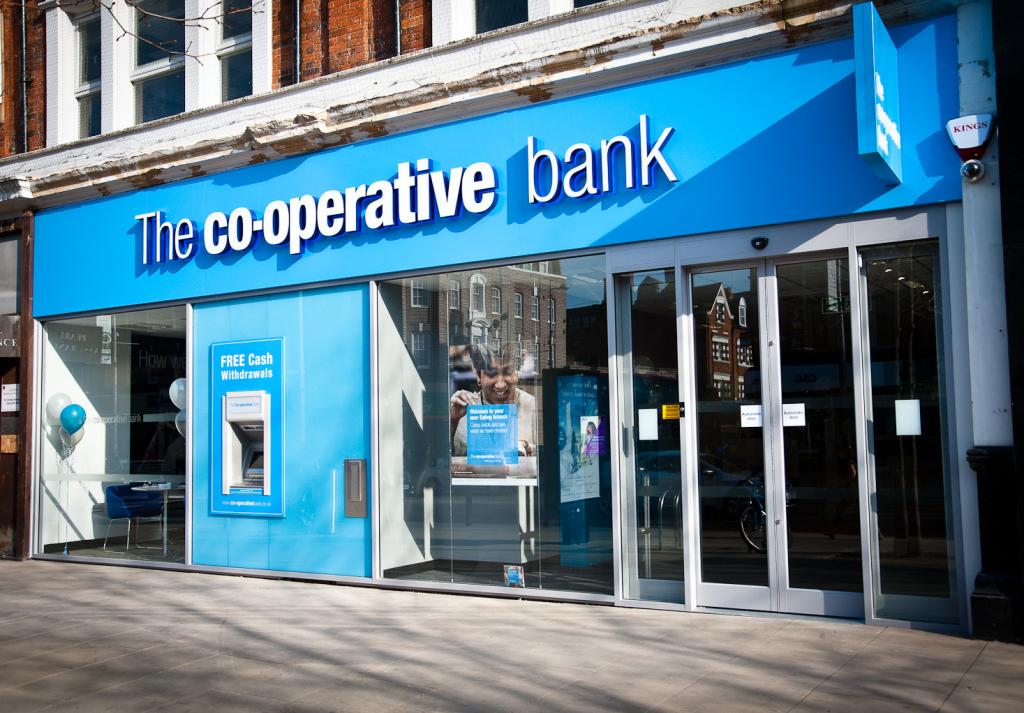![https://commons.wikimedia.org/wiki/File%3AGuaranteed_Payday_Loans-Cash_Money_Store.jpg; By Vinceesq [CC BY-SA 3.0 (http://creativecommons.org/licenses/by-sa/3.0) or GFDL (http://www.gnu.org/copyleft/fdl.html)], via Wikimedia Commons](https://wp-media.patheos.com/blogs/sites/533/2016/10/800px-Guaranteed_Payday_Loans-Cash_Money_Store.jpg)
Some time ago, I read a book, which I really thought I had blogged about, about payday loans, and how evil the industry is. As it happens, I couldn’t find that blog post, so perhaps this book predates my blogging or I never got around to blogging about it, but as I recall, the author described the nefarious practices of payday lenders, getting their customers to roll over loans repeatedly, with high fees each time, and describes the exceptional wealth the lenders accrued by impoverishing their customers. Or something like that.
This book takes something of the opposite approach. Here, Big Banks are the villains, charging unwarranted fees, huge overdraft penalties, and the like. They engage in shady practice which delay making funds available after a check has been deposited. They refuse to provide bank accounts to people with poor credit ratings, and so on. Rather than serving the community, they’re only out for profit.
Add in the number of people suffering because of the poor economy, especially millennials in the Gig Economy, living from paycheck to paycheck, unable to accumulate enough money for emergency savings, and Americans’ use of businesses such as check cashing companies or payday lenders or other alternate lenders, is entirely rational, in her portrayal, and it’s wrong for policymakers to act as if all Americans need to do is to be told they should get a bank account and that’s that.
Servon’s research for the book consisted, in part, of actually working at a check cashing service and a payday lender. (Side note: in the Chicago area, the former businesses are called “currency exchanges” and it took me a while to figure out that they were not literally places to exchange foreign currency for dollars — in the Detroit area these businesses are more straightforwardly called “check cashing”. I have since then been in these places a couple times because it’s the only place that I know of with a public notary.) In neither case was she “undercover” but rather used her contacts to get the jobs, telling the business owners that she was researching but was generally sympathetic to their businesses. At the check cashing business, she reports that customers without bank accounts prefer to cash their checks there at a fixed fee per check, rather than chance it with a bank’s fees. Even if they do have a bank account, they often prefer to pay the check casher’s fees and get their money right away, rather than have to worry about the funds being available, and overdrawing their account if the check they deposited didn’t clear. And customers come for other transactions: they withdraw money from their EBT (welfare) cards, where the fee that the company charges is worth the cost because they can withdraw smaller amounts of money than the $20 increments in an ATM.
She also describes, more with anecdote than statistics, the precarious state of American households. In her telling, Americans are, in general, so burdened by medical expenses, housing costs, and daycare expenses, that we are pretty much all living paycheck to paycheck. (OK, she says half of Americans live PC2PC, and cites in the endnotes a Time article from 2014, which itself cites a study by the Corporation for Enterprise Development which says that 44% of American households have less than $5,887 in savings. The Time article’s link to this study is bad, so there’s no way of identifying how this “amount of savings” was defined, but this 6K threshold doesn’t seem to be the right cut-off to say what proportion of households have no access to cash for emergencies.) She later reports that “40 percent of Americans report that income shortfalls cause them to spend more than they earn” (p. 63) but there’s no source given for this claim — is this describing an ongoing situation, or Americans who spend exuberantly at Christmas?
In any case, she says that Americans are increasingly indebted, fueled by the rise in credit card availability — yet at the same time, after Americans got “hooked” on credit cards, the overall tightening after the recession, meant that they were dependent on credit but forced to go elsewhere — the “elsewhere” being payday lenders, car title lenders, and pawnshops. And here, too, Servon went “openly undercover” in order to understand the business better. She profiles an employee of the lender, who herself ended up needing to take out a loan, and struggled to pay it back, but saw no alternative because she needed to get her car repaired in order to make it to work everyday. She says,
If lenders are to blame for the indebtedness of so many borrowers, the easy answer would be to shut them all down. But wiping each and every lender off the map would do nothing to quell the demand for these loans. What would Ariane have done if payday loans were unavailable? (p. 83)
Oddly, though, she later addresses this question, in a chapter on “borrowing and saving under the radar” about savings groups and “informal lenders,” without really making a connection between the two. The “informal lenders” that she profiles come out as almost heroic, not the stereotypical “loan sharks” who’ll break your legs if you don’t pay up, but kindly neighborhood women (generally) who have happened to accumulate enough money to be able to earn money lending at interest. How do these “informal lenders” compare to payday lenders, in terms of rates they charge, or how easily a person can get a loan in the first place? She doesn’t say.
She then concludes the book by talking about “innovators.” She profiles a start-up that intends to provide an alternate credit-scoring model that takes into account other types of financial behavior that’s not typically incorporated into the mainstream credit bureaus’ credit scores, and a start-up that intends to make it cheaper to transfer money from one person to another, and a bank, KeyBank, that is more mission-oriented than the usual faceless big corporate bank.
But when she finishes off with her recommendations, they’re not as simple as “make banks be nicer.” She recognizes it’s not that simple. Instead, she suggests that, in the same way as the federal government provides subsidized phone service for the poor, there should be subsidies for free checking/savings accounts for the poor, either directly on a per-account basis, or by providing money to credit unions, or by having the government itself, via the Post Office, run its own bank. She also calls on a more standardized, easier to understand, fee disclosure akin to the health department restaurant grades, and suggests a “sandbox for innovators” though it’s not exactly clear how that would work. And on top of this, she simply wants for policymakers to “fix” the economy in general, with the usual laundry list of objectives: a basic income, a jobs-creation program, subsidies for childcare, and the like.
Now, Servon’s book is fine, as far as it goes. But it seems to me to be incomplete.
One thing she entirely fails to mention is the fact that interest rates have dropped so dramatically.
From the bank’s perspective, the whole notion of “they earn money by paying a reasonable interest rate to account holders, and then lending the money back out at a higher rate,” doesn’t exist in the same way as it used to. I am hardly an expert, but I would guess that the increase in fees charged by banks is not just because they became more rapacious, or hadn’t realized in the past that this was an option available to them, but because they are not earning the sort of income they used to on the margin between money deposited and money lent out. I could be wrong, but it seems to me that this has changed.
And from the customer’s perspective, this has changed a great deal. I suspect that those who can afford it, are much less likely to keep large balances at a traditional bank, because the interest income is virtually 0 — they’ll transfer their money over to their broker or into a mutual fund or other investment. At the other end of the income spectrum, individuals are likewise less likely to see any value in keeping money in a “savings account” when that childhood lesson about earning interest just doesn’t mean anything any longer. (I remember back when we used to have a checking account and savings account, and transfer balances from one to the other to take advantage of the interest income of the savings account. That’s pretty much vanished.)
A second development in the banking world that she neglects to mention is the rise in prepaid debit cards.
Some years ago, the media (e.g., here, the New York Times, in 2013) began reporting on a new trend in payroll: employers of low-wage workers began paying them through these prepaid cards. In some cases, they were as an alternative to paper checks; in other cases, even employees who wanted to direct-deposit their earnings into their own bank account found that they were unable to do so, or had a very difficult time getting their employer to cooperate. These employers justify use of these cards as cheaper than using a check-cashing service, for those without bank accounts, though the fees on these cards can add up to quite a substantial cost.
To the extent that one finds a prepaid card with reasonable fees, these products can be a reasonable substitute for a bank account in a number of ways, allowing one to make purchases online, and having a means of storing one’s money securely (they can be reported stolen just like a “real” credit card). Their websites tout the fact that, since they can never be overdrawn, there are never any fees for overdrafts. Their critics complain that they don’t allow one to “build credit.” How popular are these cards? And are they a reasonable substitute for a bank account? Servon’s picture is incomplete without this information.
And the third missing item is that of competition.
Servon describes the check cashing and payday lender businesses as “like family.” But I recall a payday lender that I used to pass by relatively often, and I was always struck by the sign in the window: “we will beat anyone’s rates.” Servon is happy to stick up for the “unbanked” by arguing that their behavior is rational under their circumstances, but I would have to believe that their behavior is rational in another way, too, looking for the best deal among available lending options. (This isn’t as much an issue for currency exchanges/check cashers, where the fees seemed to be fixed by law.) If one place charges $20 for a $200 loan, and another $30, surely the payday lenders are so widespread that one could check on the best rates, rather than blindly going to the closest lender, right? And even if one is so hard-up that there literally is no time for price-checks, one would assume there would be a word-of-mouth reputation in terms of costs, right?
So there you have it. Readers, what are your experiences with banks?
Image: https://commons.wikimedia.org/wiki/File%3AGuaranteed_Payday_Loans-Cash_Money_Store.jpg; By Vinceesq [CC BY-SA 3.0 (http://creativecommons.org/licenses/by-sa/3.0) or GFDL (http://www.gnu.org/copyleft/fdl.html)], via Wikimedia Commons












